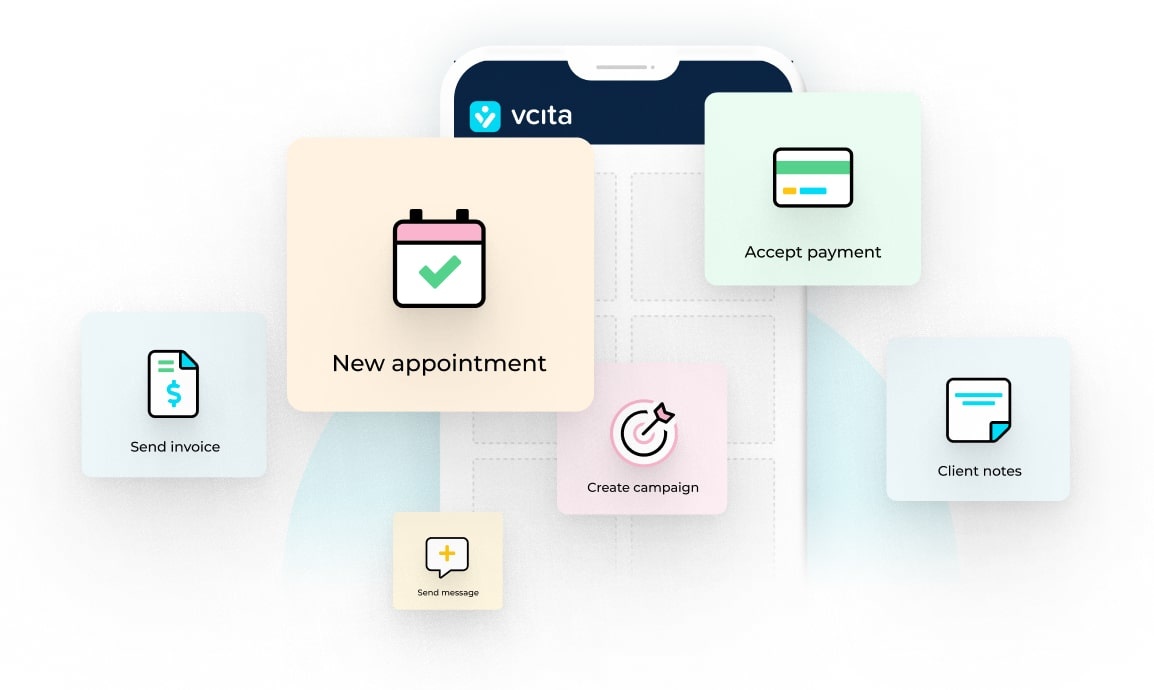Are you ready to take your small business to the next level? Mastering SWOT analysis is your secret weapon to help you get there. This powerful tool helps you identify your business strengths and weaknesses, uncover new opportunities, and prepare for potential threats.
Let’s dive in and learn how to conduct a SWOT analysis that will supercharge your strategic planning and give you a competitive edge.
What is a SWOT analysis for small business?
A SWOT analysis for small business is a powerful strategic planning tool that helps you gain a comprehensive understanding of your company’s position in the market. By examining both internal and external factors, you’ll be able to make informed decisions and develop an actionable plan for growth.
Breaking down the SWOT framework
SWOT stands for Strengths, Weaknesses, Opportunities, and Threats. Let’s explain each component:
- Strengths: These are your business strengths – the internal factors that give you an edge over competitors. Think about your unique products or services, stellar customer service, or valuable intellectual property.
- Weaknesses: These are areas where your small business could improve. Maybe your customer base is limited, or you’re struggling with cash flow issues.
- Opportunities: This concerns external factors that could benefit your business. This might include emerging markets, new technologies, or changes in consumer behavior.
- Threats: In this section come potential threats to business success, such as increasing competition, changing regulations, or economic downturns.
The benefits of conducting a SWOT analysis
Performing a SWOT analysis allows you to assess your business both internally and externally. By understanding your strengths and weaknesses, you can capitalize on what you do best while addressing areas that need improvement. Simultaneously, identifying opportunities and threats helps you stay ahead of market trends and potential challenges.
SWOT analyses aren’t just for large corporations. This tool can also help small businesses to navigate challenges and seize opportunities for growth. By regularly conducting SWOT analyses, you’ll be better equipped to adapt to changing market conditions and stay competitive in your industry.
Conducting effective SWOT analysis for strategic planning
A SWOT analysis is an excellent foundation for strategic planning. It ensures that you fully understand your business’s strengths, weaknesses, opportunities, and threats, both internally and externally. Then you can create business strategies that are based on solid data and reliable insights, helping drive your business to success.
Let’s dive into how you can conduct a SWOT analysis for your small business and use it to create an actionable plan.
Conducting your SWOT analysis
To conduct a SWOT analysis for your small business, follow these steps:
- Gather a diverse team from different departments.
- Brainstorm and list items for each quadrant of the SWOT matrix.
- Prioritize the most important factors in each category.
- Analyze how strengths can be leveraged to capitalize on opportunities.
- Identify ways to address weaknesses and mitigate potential threats.
Maximizing the benefits
To get the most out of your SWOT analysis:
- Be honest and objective in your assessment
- Involve key team members to gain diverse perspectives
- Use the insights to inform your business strategies and decision-making
Remember, the goal is to create a clear, honest assessment of your business’s situation. Don’t shy away from acknowledging weaknesses or potential threats – addressing them head-on is key to effective strategic planning.
Turning analysis into action
Once you’ve completed your SWOT analysis, it’s time to develop business strategies based on your findings. Use the insights gained to create an actionable plan that:
- Builds on your business strengths
- Addresses weaknesses
- Capitalizes on opportunities
- Prepares for potential threats
Identifying your business’ strengths and weaknesses
Conducting a SWOT analysis for your small business is like holding up a mirror to your company. It helps you see what’s working, what’s not, and where you can improve. Here’s a guide to how you can identify your business strengths and weaknesses to create a solid foundation for growth.
Assessing Internal Factors
When performing a SWOT analysis, start by looking inward at your Strengths and Weaknesses. Your business strengths are the areas where you excel. These could include:
- Unique products or services
- Exceptional customer service
- Strong brand recognition
- Skilled team members
- Proprietary technology or intellectual property
On the flip side, weaknesses are internal factors holding you back. Common weaknesses for small businesses include:
- Limited financial resources
- Inefficient processes
- Outdated technology
- Poor management practices
- Lack of marketing expertise
Be honest with yourself. Identifying weaknesses isn’t about beating yourself up; it’s about finding opportunities for improvement.
Evaluating external factors
Next, look at the external landscape, namely your Opportunities and Threats. Opportunities are external factors you can leverage for growth, such as:
- Emerging markets
- New technologies
- Changes in customer needs
- Partnerships or collaborations
Threats, however, are external factors that could harm your business:
- New competitors
- Economic downturns
- Changing regulations
- Shifts in consumer behavior
By assessing both internal and external factors, you’ll gain a comprehensive view of your business’s position in the market.
Turning insights into action
The real power of a SWOT analysis lies in using these insights to create an actionable plan. Here’s how:
- Leverage your strengths to capitalize on opportunities
- Address weaknesses to mitigate potential threats
- Use your strengths to overcome weaknesses
- Develop strategies to turn threats into opportunities
A SWOT analysis isn’t a one-time event. As a savvy business owner, you should conduct SWOT analyses regularly to stay ahead of the curve and ensure your business strategies remain relevant and effective.
Understanding your customer base and customer service
Growing your customer base is a key goal for many small business owners. To achieve this, you need to understand what makes your current customers tick. What aspects of your products or services resonate with them? How does your customer service set you apart?
SWOT analysis delivers these insights, which you can then use to craft targeted marketing strategies that speak directly to potential customers who share similar characteristics with your existing base. This approach can help you identify new opportunities and mitigate potential threats in your market.
Know your customers inside out
To truly understand your customer base, combine qualitative and quantitative research, like:
- Analyze purchasing patterns
- Gather feedback through surveys
- Monitor social media interactions
Surveys, interviews, and data analysis can reveal valuable insights about who your customers are and why they choose your business. This information is gold when conducting a SWOT analysis, as it helps identify your business strengths and potential opportunities.
Remember, your customer base is dynamic. Regularly update your research to stay ahead of changing trends and preferences.
The power of exceptional customer service
Your customer service can be one of your most potent business strengths. It’s not just about solving problems; it’s about creating experiences that turn customers into loyal advocates. When performing a SWOT analysis, consider how your customer service stacks up against competitors.
Constant contact with customers, whether through social media, email, or in-person interactions, allows you to offer value consistently. This ongoing relationship helps you stay attuned to their needs, enabling you to adapt your offerings and strengthen your position in the market.
By focusing on these aspects, you’ll be well-equipped to create an actionable plan that leverages your strengths and addresses weaknesses in relation to your customer base and service.
Uncovering new opportunities for growth
Performing a SWOT analysis isn’t just about identifying your current position – it’s about charting a course for future success. Here are some of the ways that your SWOT analysis can lead to increased revenue.
Exploring untapped markets
One of the most exciting aspects of conducting a SWOT analysis is identifying new opportunities for growth. You’re always on the lookout for ways to expand your customer base and boost your bottom line. One key strategy is to explore untapped markets that align with your products or services.
Start by examining your current offerings and customer demographics. Are there adjacent markets or customer segments you haven’t yet targeted? Perhaps your handmade soap business could expand into luxury hotels, or your accounting firm could specialize in serving tech startups. By thinking creatively about who else might benefit from your expertise, you can uncover hidden gems of opportunity.
Leveraging market research
To truly capitalize on opportunities, market research is essential. Dive deep into industry trends, consumer behavior, and competitive landscapes. This research will help you validate your hunches and identify the most promising avenues for growth.
Consider using tools like surveys, focus groups, or social media listening to gather insights directly from potential customers. You might discover unmet needs or pain points that your business is uniquely positioned to address. This valuable information can inform your business strategies and help you make data-driven decisions about where to focus your expansion efforts.
Forging strategic collaborations
Sometimes, the fastest path to growth is through collaboration. Strategic partnerships can open doors to new markets, technologies, or customer segments that might otherwise be out of reach for a small business. Look for complementary businesses, or larger corporations that could benefit from your unique strengths.
For example, a local artisanal food producer might partner with a national grocery chain to reach a wider audience. Or a small software company could team up with an established industry player to integrate their innovative solution into a larger platform. These collaborations can be win-win situations, allowing you to leverage your business strengths while tapping into your partner’s resources and reach.
By thinking creatively about untapped markets, conducting thorough research, and exploring strategic partnerships, you can uncover exciting new opportunities for growth.
Preparing for potential threats to your small business
In today’s dynamic business landscape, risks and threats are constantly appearing. Your SWOT analysis should ensure that you notice and address new threats before they cause trouble for your business, helping you to stay ahead of the curve and maintain your competitive edge.
Conduct a comprehensive risk assessment
Start by conducting a detailed risk assessment. This involves:
- Identifying potential risks specific to your industry and business model
- Evaluating the likelihood and potential impact of each threat
- Prioritizing risks based on their severity and probability
By performing a SWOT analysis that includes a robust threat assessment, you’ll be better equipped to develop strategic planning initiatives that address vulnerabilities in your business plan.
Cybersecurity: A critical concern for small businesses
In our increasingly digital world, cyberattacks pose a significant threat to small businesses, so make cybersecurity a priority in your SWOT analysis. Don’t make the mistake of thinking you’re too small to be a target. Hackers often view small businesses as low-hanging fruit, due to potentially weaker security measures.
To protect your business strengths and customer base from digital threats:
- Implement strong password policies and multi-factor authentication
- Regularly update and patch all software and systems
- Train your employees on cybersecurity best practices
- Consider investing in cybersecurity insurance
Remember, a data breach can severely damage your customer service reputation and erode trust in your products or services.
Develop an actionable plan to address threats
Once you’ve identified potential threats through your SWOT analyses, it’s crucial to develop an actionable plan to mitigate these risks. This plan should:
- Address both internal and external factors that could impact your business
- Outline specific steps to strengthen weaknesses and capitalize on opportunities
- Include contingency plans for various threat scenarios
By proactively addressing potential threats, you’ll be better positioned to protect your business strengths, intellectual property, and overall success in the long run.
Leveraging your intellectual property and business assets
You might not realize it, but your intellectual property (IP) could be one of your most valuable assets. Let’s dive into how you can use your IP to supercharge your business strengths and gain a competitive edge in your market.
Turning ideas into revenue
Your unique products or services, innovative processes, or even your brand itself can be goldmines waiting to be tapped. By properly managing and protecting your IP, you’re not just safeguarding your ideas, you’re creating potential new revenue streams. For example, you could license your technology to other businesses or franchise your successful business model.
Boosting your company’s value
When conducting a SWOT analysis for small business, don’t overlook the power of a well-managed IP portfolio. It can significantly enhance your company’s valuation, making you more attractive to investors or potential buyers. This is especially crucial if you’re planning an exit strategy or looking to secure funding for growth.
Gaining a competitive advantage
In today’s cutthroat business world, standing out is key. Your IP can give you that edge. Whether it’s a patented product feature, a secret recipe, or a trademarked slogan, these assets can set you apart from the competition. When performing a SWOT analysis, consider how your IP contributes to your strengths and opportunities.
Leveraging your IP isn’t just about defense – it’s about offense too. Use it to create barriers to entry for competitors, negotiate better deals with suppliers, or even as collateral for loans. The next time you’re updating your business plan or strategic planning, don’t forget to give your IP the attention it deserves. It could be the key to unlocking your small business’s full potential.
Developing actionable business strategies from SWOT
Conducting a SWOT analysis for your small business is just the beginning. The real magic happens when you transform those insights into concrete actions. Let’s dive into how you can leverage your SWOT analysis to craft business strategies that pack a punch.
Turning strengths into competitive advantages
Your business strengths are your secret weapons. Whether it’s top-notch customer service or unique products or services, these are the areas where you shine. To make the most of them:
- Double down on what sets you apart
- Highlight your strengths in your marketing efforts
- Invest in further developing these areas
For example, if your stellar customer service is a key strength, consider implementing a loyalty program to further cement your customer base.
Addressing weaknesses head-on
No business is perfect, and that’s okay. Your SWOT analysis helps identify areas for improvement. To tackle weaknesses:
- Prioritize which weaknesses to address first
- Develop specific action plans for each
- Consider outsourcing or partnering to shore up weak spots
If your small business struggles with online presence, you might invest in digital marketing training or hire a social media expert.
Seizing opportunities for growth
Opportunities are like golden tickets, so don’t let them slip away. After performing a SWOT analysis, you’ll have a clearer picture of potential growth areas. To capitalize on these:
- Align opportunities with your strengths
- Create timelines for pursuing each opportunity
- Allocate resources strategically
Say you’ve identified a gap in the market for eco-friendly products. This could be your cue to develop a new, sustainable product line.
Mitigating potential threats
Every business faces threats, but forewarned is forearmed. Your SWOT analysis helps you spot potential dangers early enough, so that you can take steps to prevent them from arriving. To protect your business:
- Develop contingency plans for each identified threat
- Stay informed about industry trends and changes
- Build flexibility into your business plan
For instance, if new regulations threaten your current business model, start exploring alternative approaches or markets now.
By translating your SWOT analysis into an actionable plan, you’re not just analyzing – you’re strategizing. This approach turns your SWOT from a static document into a dynamic tool for strategic planning and business growth.
SWOT analysis can help your business soar
There you have it – the ins and outs of mastering SWOT analysis for your small business. By taking a hard look at your strengths, weaknesses, opportunities, and threats, you’ll gain invaluable insights to inform your business strategies. A well-executed SWOT analysis is more than just a business exercise; it’s a roadmap for success in your small business journey





